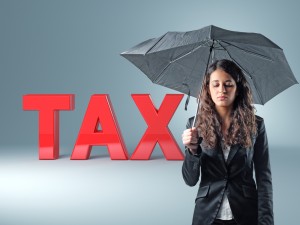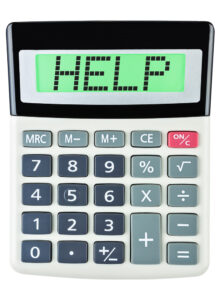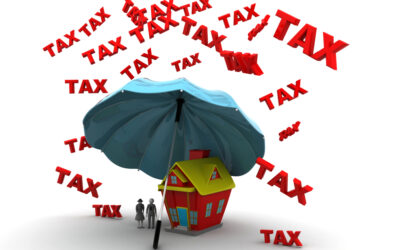What are the tax and investment considerations for a Granny Flat above versus a Tiny Home below? Income Tax Return Reporting - Income Streaming Tiny Homes Tiny home ownership does not have to follow the ownership interest of the underlying property ownership. For...
2016 Tax Rates
2016 Tax Rates
 Resident Individuals
Resident Individuals
The following rates apply to individuals who are residents of Australia for tax purposes for the entire income year.
| Taxable Income1$ | Tax Payable2,3 |
| 0 – 18,200 | Nil |
| 18,201 – 37,000 | 19% of excess over $18,200 |
| 37,001 – 80,000 | $3,572 + 32.5% of excess over $37,000 |
| 80,001 – 180,000 | $17,547 + 37% of excess over $80,000 |
| 180,001+ | $54,547 + 47%4 of excess over $180,000 |
- The tax-free threshold may effectively be higher for taxpayers eligible for the low-income tax offset, the Seniors and Pensioners Tax Offset and/or certain other tax
- The above rates do not include the Medicare Levy (2% from 1 July 2014, previously 1.5%).
- As part of the 2015/16 Federal Budget, the government announced that, with effect from 1 July 2015, individual taxpayers with business income from an unincorporated business that has an aggregate annual turnover of less than $2 million will be eligible for a small business tax The discount will be 5% of the income tax payable on the business income received from an unincorporated small business entity. The discount will be capped at $1,000 per individual for each income year and will be delivered as a tax offset.
- This rate includes the 2% ‘Temporary Budget Repair Levy’ which applies from 1 July 2014 until 30 June 2017 on that part of a person’s taxable income that exceeds $180,000.
Non-resident Individuals
The following rates apply to individuals who are not residents of Australia for tax purposes for the entire income year:
| Taxable Income$ | Tax Payable1,2 |
| 0 – 80,000 | 32.5% of the entire amount |
| 80,001 – 180,000 | $26,000 + 37% of excess over $80,000 |
| 180,001+ | $63,000 + 47%3 of excess over $180,000 |
- Medicare Levy is not payable by non-residents.
- As part of the 2015/16 Federal Budget, the government announced that, with effect from 1 July 2015, individual taxpayers with business income from an unincorporated business that has an aggregate annual turnover of less than $2 million will be eligible for a small business tax The discount will be 5% of the income tax payable on the business income received from an unincorporated small business entity. The discount will be capped at $1,000 per individual for each income year and will be delivered as a tax offset. At the time of writing, no information was available regarding if and how this proposal applies to non-resident individuals.
- This rate includes the 2% ‘Temporary Budget Repair Levy’ which applies from 1 July 2014 until 30 June 2017 on that part of a person’s taxable income that exceeds $180,000.
Resident Minors – Unearned (Division 6AA) Income
The following rates apply to the income of certain minors (e.g., persons under 18 years of age on the last day of the income year who are not classed as being in a full-time occupation) that is not excepted income (e.g., employment income):
| Division 6AA Income$ | Tax Payable1,2,3 |
| 0 – 416 | Nil |
| 417 – 1,307 | 68% of excess over $416 |
| 1,308+ | 47% of the entire amount |
- The 2% Medicare levy is not included but may
- Resident minors are not entitled to the low-income tax offset in respect of ‘unearned’
- The effect of the 2% ‘Temporary Budget Repair Levy’ which applies from 1 July 2014 until 30 June 2017 has been included in the above
Non-resident Minors – Unearned (Division 6AA) Income
The following rates apply to the income of certain non-resident minors (e.g., non-resident persons under 18 years of age on the last day of the income year who are not classed as being in a full-time occupation) that is not excepted income (e.g., employment income):
| Division 6AA Income$ | Tax Payable1,2 |
| 0 – 416 | 34.5% of the entire amount |
| 417 – 663 | $143.52 + 68% of excess over $416 |
| 664+ | 47% of the entire amount |
- The Medicare Levy is not payable by non-residents.
- The effect of the 2% ‘Temporary Budget Repair Levy’ which applies from 1 July 2014 until 30 June 2017 has been included in the above
Pro-Rated Tax-Free Threshold – Non-residents
The tax-free threshold that applies to residents ($18,200 per annum in 2013/14 and 2014/15) is effectively pro-rated in an income year in which a taxpayer either ceased to be, or became, a resident for tax purposes. For the 2014/15 income years the pro-rated threshold will be calculated using the following formula:
$13,464 + ($4,736 x number of months taxpayer was resident for the year ÷ 12)
Genuine Redundancy Payments
The tax-free amount of a genuine redundancy payment in 2014/15 is $9,514 plus $4,758 for each completed year of service.
S.99 Assessment – Resident Deceased Estate
 The following rates apply where a trustee is assessed under S.99 of the ITAA 1936 in respect of a resident deceased estate. Where the date of death is less than 3 years before the end of the income year, the trustee is assessed as a resident individual.
The following rates apply where a trustee is assessed under S.99 of the ITAA 1936 in respect of a resident deceased estate. Where the date of death is less than 3 years before the end of the income year, the trustee is assessed as a resident individual.
| Taxable Income$ | Rate1% |
| Less than 3 years since death | |
| 0 – 18,200 | Nil |
| 18,201 – 37,000 | 19% of excess over $18,200 |
| 37,001 – 80,000 | $3,572 + 32.5% of excess over $37,000 |
| 80,001 – 180,000 | $17,547 + 37% of excess over $80,000 |
| 180,001+ | $54,547 + 47%2 of excess over $180,000 |
| 3 years or more since death | |
| 0 – 416 | Nil |
| 417 – 670 | 50% of excess over $416 |
| 671 – 37,000 | $127.30 + 19% of excess over $670 |
| 37,001 – 80,000 | $7,030 + 32.5% of excess over $37,000 |
| 80,001 – 180,000 | $21,005 + 37% of excess over $80,000 |
| 180,001+ | $58,005 + 47%2 of excess over $180,000 |
- Medicare Levy does not apply to S.99 assessments of deceased estate
- This rate includes the 2% ‘Temporary Budget Repair Levy’ which applies from 1 July 2014 until 30 June 2017 to the extent taxable income exceeds $180,000.
Medicare Levy – 2014/15
| Taxpayer | Rate% |
| 2015 | 2% of taxable income |
Low-income Thresholds – Individuals
The 2014/15 Medicare Levy low-income thresholds for individuals are as follows:
| Single Taxpayer | Threshold Amount1$ | Phase-in Limit2$ | 2% at or Above3$ |
| Not eligible for Seniors and Pensioners Tax Offset | 20,896 | 20,897 – 26,120 | 26,121 |
| Eligible for Seniors and Pensioners Tax Offset | 33,044 | 33,045 – 41,305 | 41,306 |
- No Medicare Levy is payable on taxable income levels at or below the Threshold
- Where taxable income falls within the Phase-in Limit, the Medicare Levy is payable at 10% of the excess over the Threshold
- The Medicare Levy of 2% (increased from 1.5%) applies to the entire amount of taxable
Medicare Levy Surcharge – 2014/15
The Medicare levy surcharge (‘MLS’) may apply in respect of a resident taxpayer where the taxpayer, their spouse and/or dependent children (if any) did not have the appropriate level of private patient hospital cover (subject to certain exceptions for ‘prescribed persons’) and the applicable ‘income test’ threshold is exceeded.
From 1 July 2012, the rate at which the MLS is applied is determined under a tiered income system whereby a taxpayer’s level of ‘income for surcharge purposes’ (on a spouse inclusive basis, where relevant) is classified as either ‘Base Tier’, ‘Tier 1’, ‘Tier 2’ or ‘Tier 3’.
Income tier thresholds
The following table sets out the income thresholds and MLS rates that apply in respect of:
- Taxpayers who were single for the whole income year; and
- Taxpayers who were ‘married’ (including de facto, same, or opposite sex partners) and/or had at least one ‘dependent child’ (children) for the whole income
The MLS only applies in respect of periods in which private patient hospital cover was not held for the taxpayer, their spouse and dependants (if relevant).
Medicare Levy Surcharge Thresholds – 2014/15
| Base Tier$ | Tier 1$ | Tier 2$ | Tier 3$ | |
| Singles1 | 90,000 or less | 90,001 – 105,000 | 105,001 – 140,000 | 140,001+ |
| Families and Couples1,2,3 | ||||
| 0 dependants | 180,000 or less | 180,001 – 210,000 | 210,001 – 280,000 | 280,001+ |
| 1 dependant | 180,000 or less | 180,001 – 210,000 | 210,001 – 280,000 | 280,001+ |
| 2 dependants | 181,500 or less | 181,501 – 211,500 | 211,501 – 281,500 | 281,501+ |
| 3 dependants | 183,000 or less | 183,001 – 213,000 | 213,001 – 283,000 | 283,001+ |
| 4 dependants | 184,500 or less | 184,501 – 214,500 | 214,501 – 284,500 | 284,501+ |
| 5 dependants | 186,000 or less | 186,001 – 216,000 | 216,001 – 286,000 | 286,001+ |
| Each extra child | 1,500 | 1,500 | 1,500 | 1,500 |
| Medicare levy surcharge rate4 | ||||
| Rate | 0.0% | 1.0% | 1.25% | 1.5% |
- Based on the law applying at the time of writing, the MLS income thresholds will remain at 2015 rates for the next three years.
- For a couple, their combined income for surcharge purposes is generally applied against the family surcharge threshold (but levied against each of the taxpayer’s own taxable income, reportable fringe benefits and on any amounts on which family trust distribution tax has been paid). However, if the income for surcharge purposes of one of the couple does not exceed the applicable Medicare levy low income threshold that member is not liable for the
- A taxpayer’s child is a ‘dependant’ child for these purposes where the child is a resident, aged less than 21 years (or between 21 years and less than 25 years and receiving full-time education at a school, college or university) and the taxpayer contributed to the maintenance of the
- If the MLS applies, it is levied on the taxpayer’s taxable income, reportable fringe benefits and on any amounts on which family trust distribution tax has been
Note that, where a taxpayer’s circumstances change during the income year, for example, if the taxpayer marries, or ceases to be married, during the income year, the MLS is calculated separately for each of these periods (based broadly on the rules set out above).
HELP Repayment Thresholds – 2014/15
 The Higher Education Loan Programme (‘HELP’) offers Commonwealth loans to eligible students to assist them with paying their higher education fees and to study overseas. A HELP debt is repaid through the taxation system, based on a taxpayer’s HELP ‘repayment income’. HELP repayment income is the sum of the taxpayer’s:
The Higher Education Loan Programme (‘HELP’) offers Commonwealth loans to eligible students to assist them with paying their higher education fees and to study overseas. A HELP debt is repaid through the taxation system, based on a taxpayer’s HELP ‘repayment income’. HELP repayment income is the sum of the taxpayer’s:
- taxable income;
- total net investment loss;
- reportable fringe benefits;
- exempt foreign employment income; and
- reportable superannuation
HELP Repayment Income Thresholds and Rates
| Rate of Repayment% | HELP Repayment Income$ |
| Nil | 0 – $53,344 |
| 4 | $53,345 – $59,421 |
| 4.5 | $59,422 – $65,497 |
| 5 | $65,498 – $68,939 |
| 5.5 | $68,940 – $74,105 |
| 6 | $74,106 – $80,257 |
| 6.5 | $80,258 – $84,481 |
| 7 | $84,482 – $92,970 |
| 7.5 | $92,971 – $99,069 |
| 8 | $99,070+ |
Note that, as part of the 2015/16 Federal Budget, the government announced that it will extend the HELP repayment framework to debtors residing overseas for six months or more if their worldwide income exceeds the minimum repayment threshold. This measure is proposed to apply from 1 July 2017.
Company Rates of Tax – 2014/15
General Company Tax Rate1
| Description of Taxpayer | Rate% |
| Private companies (except life insurance companies, RSA Providers & PDFs) | 30 |
| Public companies (except life insurance companies, RSA Providers & PDFs) | 30 |
| Corporate Unit Trusts | 30 |
| Corporate Limited Partnerships | 30 |
| Public Trading Trusts | 30 |
| Strata Title Bodies Corporate | 30 |
1 As part of the 2015/16 Federal Budget, the government announced that, with effect from the 2016 income year, it will deliver a tax cut to small businesses by reducing the company tax rate to 28.5% (i.e., a reduction of 1.5%) for companies with aggregated annual turnover of less than $2 million
Superannuation Thresholds – 2014/15
Concessional Contributions Caps
 Concessional contributions include employer contributions (including contributions made under a salary sacrifice arrangement) and personal contributions claimed as a tax deduction by a self-employed person.
Concessional contributions include employer contributions (including contributions made under a salary sacrifice arrangement) and personal contributions claimed as a tax deduction by a self-employed person.
| Year | Age at year-end | Amount of Cap |
| 2015 | 50+<50 | $35,000$30,000 |
Non-concessional Contributions Caps
Non-concessional contributions include personal contributions for which taxpayers do not claim an income tax deduction. A person is liable to pay excess contributions tax if their non-concessional contributions exceed the cap1.
| Income Year | Amount of Cap |
| 2014/15 | $180,000 or $540,0001 over 3 years |
1 There is a ‘bring-forward’ option under which taxpayers can contribute greater than $150,000 ($180,000 from 1 July 2014) in an income year as long as the total contributions for that year and the next 2 years do not exceed $450,000 ($540,000 from 1 July 2014). This option only applies to taxpayers who are under 65 at any time in the year that they want to ‘bring- forward’ their contributions.
Government Co-contribution Table for Low Income Employees
The superannuation co-contribution was initially introduced by the Government from 1 July 2003 as an incentive to encourage low income earners to save for their own retirement.
If an individual’s satisfies the income test for the co-contribution, and they make personal (non-concessional) superannuation contributions, the Government will match their contribution with a ‘co-contribution’.
For the 2013 and later income years, the government will contribute $0.50 for every $1 an eligible individual contributes into superannuation, up to the maximum co-contribution outlined in the following table for these years.
| Income Year | Total Income1,2$ | Calculation of Maximum Co-contribution$ |
| 2014/15 | 0 – 34,48834,489 – 49,48849,489+ | $500$500 – [3.333% x (Total income – $34,488)] Nil |
- Total Income is calculated as the sum of assessable income, the reportable fringe benefits total and reportable employer superannuation
- For the 2015 income year, the maximum entitlement remains at $500, whilst the lower income threshold increases to
$34,488 and the higher income threshold increases to $49,488.
Superannuation Spouse Contribution Tax Offset
The tax offset applies to contributions made by a taxpayer to a Complying Superannuation Fund or Retirement Savings Account in respect of their low-income earning, or non-working, spouse (married or de facto). The amount of the offset is as follows:
| Spouse’s Assessable Income (AI)1$ | Maximum Rebatable Contributions (MRC)$ | Maximum Offset Amount2$ |
| 0 – 10,800 | $3,000 | $540 |
| 10,801 – 13,799 | $3,000 – [AI – $10,800] | MRC x 18% |
| 13,800+ | Nil | Nil |
- Including reportable fringe benefits and reportable employer superannuation contributions.
- The offset is calculated as 18% of the actual contributions if this results in a lower
Lump Sum Superannuation Benefits – Low Rate Cap Amount
The application of the low rate threshold for superannuation lump sum payments is capped. The low rate cap amount is reduced by any amount previously applied to the low rate threshold.
| Income Year | Cap Amount |
| 2014/15 | $185,000 |
Superannuation Guarantee Rate
Employers who provide less than a prescribed level of superannuation support (the ‘charge percentage’, generally applied to the employee’s ordinary time earnings) for their employees are liable to pay a superannuation guarantee charge based on the shortfall (calculated with reference to ‘salary and wages’) plus an interest component and an administration charge.
| Income Year | Charge Percentage (%) |
| 2014/15 | 9.5 |
| 2013/141 | 9.25 |
1 From 1 July 2013, the SG age limit no longer applies.
Private Health Insurance Rebate
 The private health insurance (PHI) rebate is an amount that the government contributes towards the cost of PHI premiums. The rebate is only available in relation to a ‘complying PHI policy’ (basically, a policy offered by a registered health insurer that provides hospital cover, general treatment cover or both), excluding ‘lifetime health cover loading’ applied to the cost of a policy from 1 July 2013.
The private health insurance (PHI) rebate is an amount that the government contributes towards the cost of PHI premiums. The rebate is only available in relation to a ‘complying PHI policy’ (basically, a policy offered by a registered health insurer that provides hospital cover, general treatment cover or both), excluding ‘lifetime health cover loading’ applied to the cost of a policy from 1 July 2013.
From 1 July 2012, the PHI rebate is income tested. As a result, higher income earners now receive less PHI rebate or, if they do not have the appropriate level of private patient hospital cover, the Medicare levy surcharge may increase (as set out in table 3.03.04).
The income tier thresholds
The PHI rebate is income tested against the income tier thresholds, as set out below.
Furthermore, from 1 April 2014, PHI rebate percentages are adjusted downwards by a single rebate adjustment factor. This means that in each year, two separate PHI rebate percentages will be applied in calculating a taxpayer’s PHI rebate – one for the period 1 July to 31 March, and a separate percentage for the period 1 April to 30 June (as outlined in the following table for the 2015 income year).
| Base Tier$ | Tier 1$ | Tier 2$ | Tier 3$ | |
| Singles1,2 | ||||
| Singles | 90,000 or less | 90,001 – 105,000 | 105,001 – 140,000 | 140,001+ |
| Families/Couples1,3 | ||||
| 0 dependants | 180,000 or less | 180,001 – 210,000 | 210,001 – 280,000 | 280,001+ |
| 1 dependant | 180,000 or less | 180,001 – 210,000 | 210,001 – 280,000 | 280,001+ |
| 2 dependants | 181,500 or less | 181,501 – 211,500 | 211,501 – 281,500 | 281,501+ |
| 3 dependants | 183,000 or less | 183,001 – 213,000 | 213,001 – 283,000 | 283,001+ |
| 4 dependants | 184,500 or less | 184,501 – 214,500 | 214,501 – 284,500 | 284,501+ |
| 5 dependants | 186,000 or less | 186,001 – 216,000 | 216,001 – 286,000 | 286,001+ |
| Each extra child | 1,500 | 1,500 | 1,500 | 1,500 |
| Rebate 1 July 2014 to 31 March 2015 | ||||
| Aged under 654 | 29.040% | 19.360% | 9.680% | 0% |
| Aged 65 – 694 | 33.88% | 24.20% | 14.52% | 0% |
| Aged 70 or over4 | 38.720% | 29.040% | 19.360% | 0% |
| Rebate 1 April 2015 to 30 June 2015 | ||||
| Aged under 654 | 27.820% | 18.547% | 9.273% | 0% |
| Aged 65 – 694 | 32.457% | 23.184% | 13.910% | 0% |
| Aged 70 or over4 | 37.094% | 27.820% | 18.547% | 0% |
- Based on law applying at the time of writing, from 1 July 2015 to 30 June 2018, the PHI income thresholds will not be indexed (i.e., they will remain at 2014/15 rates for the next three years).
- A ‘single’ taxpayer is someone who is not married and does not have any dependent
- A person will generally be assessed under the ‘families/couples’ tier thresholds if the person:
- is married on the last day of the income year (including a de facto couple) – in this case, it is the combined income for surcharge purposes (i.e., the Base Tier) of the taxpayer and their spouse which is included; or
- at any time during the year, contributes in a substantial way to the maintenance of at least one dependent child who is either the person’s ‘child’ (as defined in S.995-1 of the ITAA 1997) or their ‘sibling’ who is dependent on them for economic
- This is a reference to the age of the oldest person covered by the
Per Kilometre Claims for Car Deductions
 The 2014/15 cents per kilometre (km) rates for car deductions (up to a maximum of 5,000 business kms per car), based on engine capacity, are as follows:
The 2014/15 cents per kilometre (km) rates for car deductions (up to a maximum of 5,000 business kms per car), based on engine capacity, are as follows:
| Engine Capacity (cc) | Rate per Km1 | |
| Ordinary Car | Rotary Engine Car | 2014/15$ |
| 0 – 1,600 | 0 – 800 | 0.65 |
| 1,601 – 2,600 | 801 – 1,300 | 0.76 |
| 2,601+ | 1,301+ | 0.77 |
1 Note that, as part of the 2015/16 Federal Budget, the government announced that from the 2016 income year, the three current ‘cents per km’ rates will be replaced with one rate set (initially) at 66 cents per km for all cars. The Commissioner will be responsible for updating the rate in following years.
 Goods Taken from Stock for Private Use
Goods Taken from Stock for Private Use
| Type of Business | 2014/15 | |
| Adult/Child2Over 16 years$ | Child24-16 years$ | |
| Bakery | 1,330 | 665 |
| Butcher | 790 | 395 |
| Restaurant/cafe (licensed) | 4,490 | 1,730 |
| Restaurant/cafe (unlicensed) | 3,460 | 1,730 |
| Caterer | 3,740 | 1,870 |
| Delicatessen | 3,460 | 1,730 |
| Fruiterer/greengrocer | 780 | 390 |
| Take–away food shop | 3,350 | 1,675 |
| Mixed business (e.g., milk bar, convenience store) | 4,170 | 2,085 |
- These amounts are taken from TD 2015/9 which is the current determination and which applies for the 2014/15 income
- Amounts are GST-exclusive.
Income-producing Building Write-off Rates
| Use of Building | Capital Works Commenced | Write-off Rate% |
| Non-residential buildings | ||
| Industrial | 27/2/1992+1 | 4 |
| Non-industrial buildings | 20/7/1982 – 21/8/1984 | 2.5 |
| 22/8/1984 – 15/9/1987 | 4.0 | |
| 16/9/1987+ | 2.5 | |
| Research & Development buildings | 21/11/1987+ | 2.5 |
| Residential buildings | ||
| Short-term traveller accommodation | 22/8/1979 – 21/8/1984 | 2.5 |
| 22/8/1984 – 15/9/1987 | 4.0 | |
| 16/9/1987 – 26/2/1992 | 2.5 | |
| 27/2/1992+ | 4.0 | |
| Residential income-producing buildings | 18/7/1985 – 15/9/1987 | 4.0 |
| 16/9/1987+ | 2.5 | |
| Structural improvements | 27/2/1992+ | 2.5 |
| Environment protection earthworks | 19/8/1992+ | 2.5 |
1 For an industrial building constructed before 27 February 1992, the rates for non-industrial non-residential buildings are applied.
Fringe Benefits Tax – 2016 & 2015
 FBT is imposed on the grossed-up taxable value of the benefits provided. The FBT rate is as follows:
FBT is imposed on the grossed-up taxable value of the benefits provided. The FBT rate is as follows:
| FBT Year Ended | Rate of Tax1 |
| 31 March 2016 | 49% |
| 31 March 2015 | 47% |
1 As a consequence of the introduction of the 2% ‘Temporary Budget Repair Levy’, the FBT rate has been temporarily increased to 49% for the 2016 and 2017 FBT years. This change has also affected the gross-up rates and the FBT rebate rate (which has also temporarily increased to 49% from 1 April 2015).
Gross-up Rates
| Gross-up Rate1 | ||
| FBT Year Ended | Type 1 | Type 2 |
| 31 March 2016 | 2.1463 | 1.9608 |
| 31 March 2015 | 2.0802 | 1.8868 |
1 The FBT gross-up rates have been temporarily increased for the 2016 and 2017 FBT years as a result of the introduction of the 2% ‘Temporary Budget Repair Levy’.
Car Fringe Benefits – Statutory Formula Method – Statutory Fraction
| Annualised kilometres | Statutory Fraction | |
| Agreements in existence before 7.30pm 10 May 2011 | Agreements entered into from 7.30pm 10 May 2011 | |
| 0 – 14,999 | 0.26 | 0.20 |
| 15,000 – 24,999 | 0.20 | 0.20 |
| 25,000 – 40,000 | 0.11 | 0.20 |
| 40,001+ | 0.07 | 0.20 |
Rates for Vehicles other than Cars1
| Engine Capacity | Cents per Km 2016 FBT Year$ | Cents per Km 2015 FBT Year$ |
| 0 – 2,500cc | 0.51 | 0.50 |
| 2,501cc+ | 0.61 | 0.60 |
| Motorcycles | 0.15 | 0.15 |
1 These are residual fringe benefits.
Benchmark Interest Rate for Loan Fringe Benefits
| FBT Year Ended 31 March | Rate |
| 2016 | 5.65% |
| 2015 | 5.95% |
Car Parking Threshold
| FBT Year Ended 31 March | Threshold |
| 2016 | $8.37 |
| 2015 | $8.26 |





